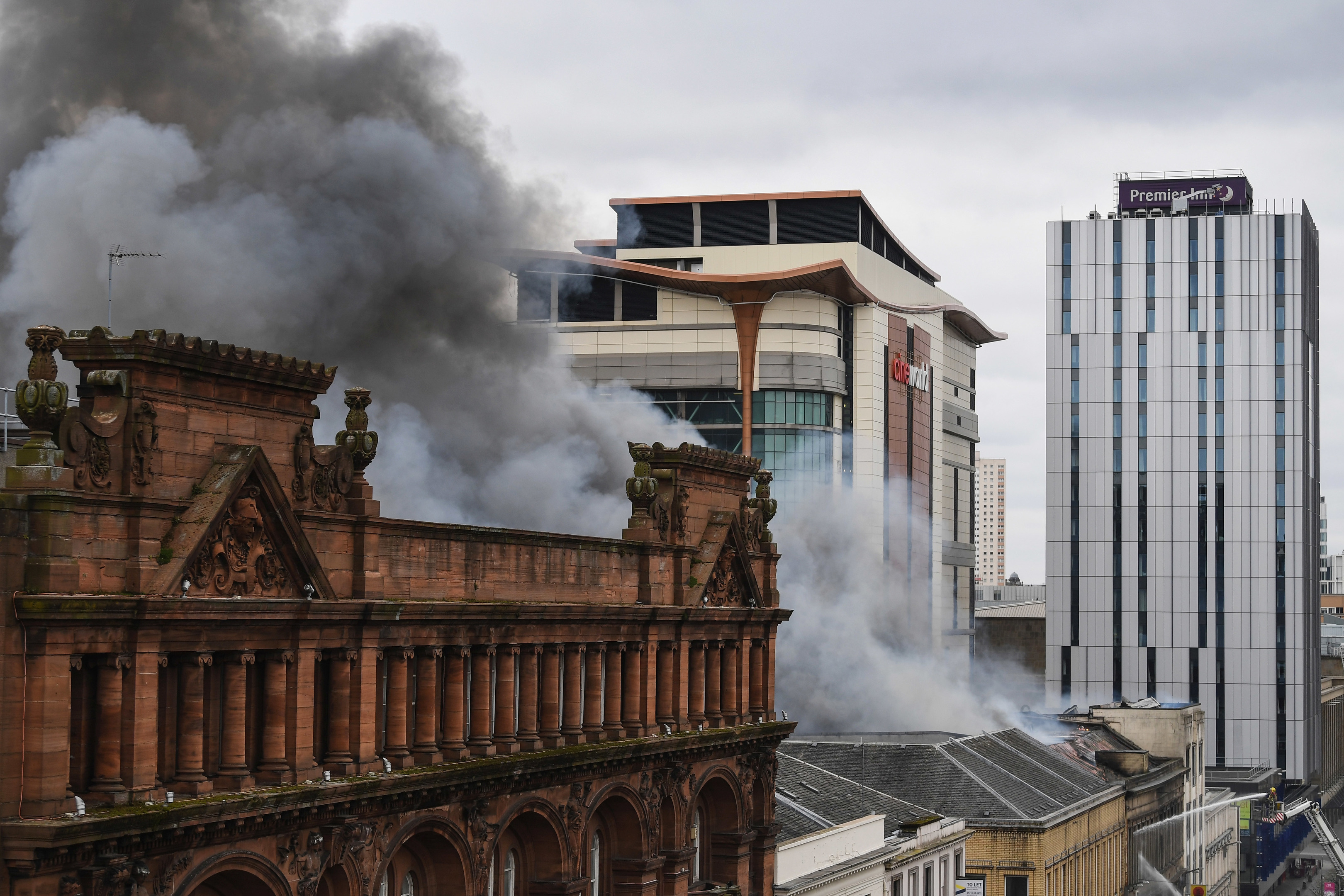
WORK has started to demolish a Glasgow city centre block that was at the centre of a major fire.
At the height of the blaze last month more than 120 firefighters were at the scene on Sauchiehall Street, tackling flames that started in the roof of the building which houses Victoria’s nightclub.
The Scottish Fire and Rescue Service said it was one of the biggest incidents it has had to deal with and surveyors said the building had to come down on safety grounds with parts of the structure unstable.
The properties affected are 92 to 106 Sauchiehall Street – from The Works stationery shop to Savers at the junction with Hope Street.
Glasgow City Council met with the building owners before demolition work started on Thursday and shops in the block including Greggs, Specsavers and Victoria’s nightclub are dealing with insurers.
Other surrounding buildings, including the Pavilion theatre, will remain closed while the demolition is carried out.
The work is expected to take two months as construction workers take the structure down “almost brick by brick”.
Raymond Barlow, assistant head of building standards at Glasgow City Council, said: “We have operatives on cranes who will gradually reduce the height of the building, working it down slowly and carefully to try and avoid collapse, and once it gets low enough then machines will come in and it will become a rubble clearing operation thereafter.
“We’re in one of the busiest parts of Glasgow but we have an extensive exclusion zone and many building evacuated because of the tight site.
“Staff of the Pavilion and other surrounding buildings have to remain out of their premises because of the dangers of collapse, the lane at the back in very narrow and the rear wall is in danger of collapsing so we can’t let anyone near that until we get the building down.”

Enjoy the convenience of having The Sunday Post delivered as a digital ePaper straight to your smartphone, tablet or computer.
Subscribe for only £5.49 a month and enjoy all the benefits of the printed paper as a digital replica.
Subscribe